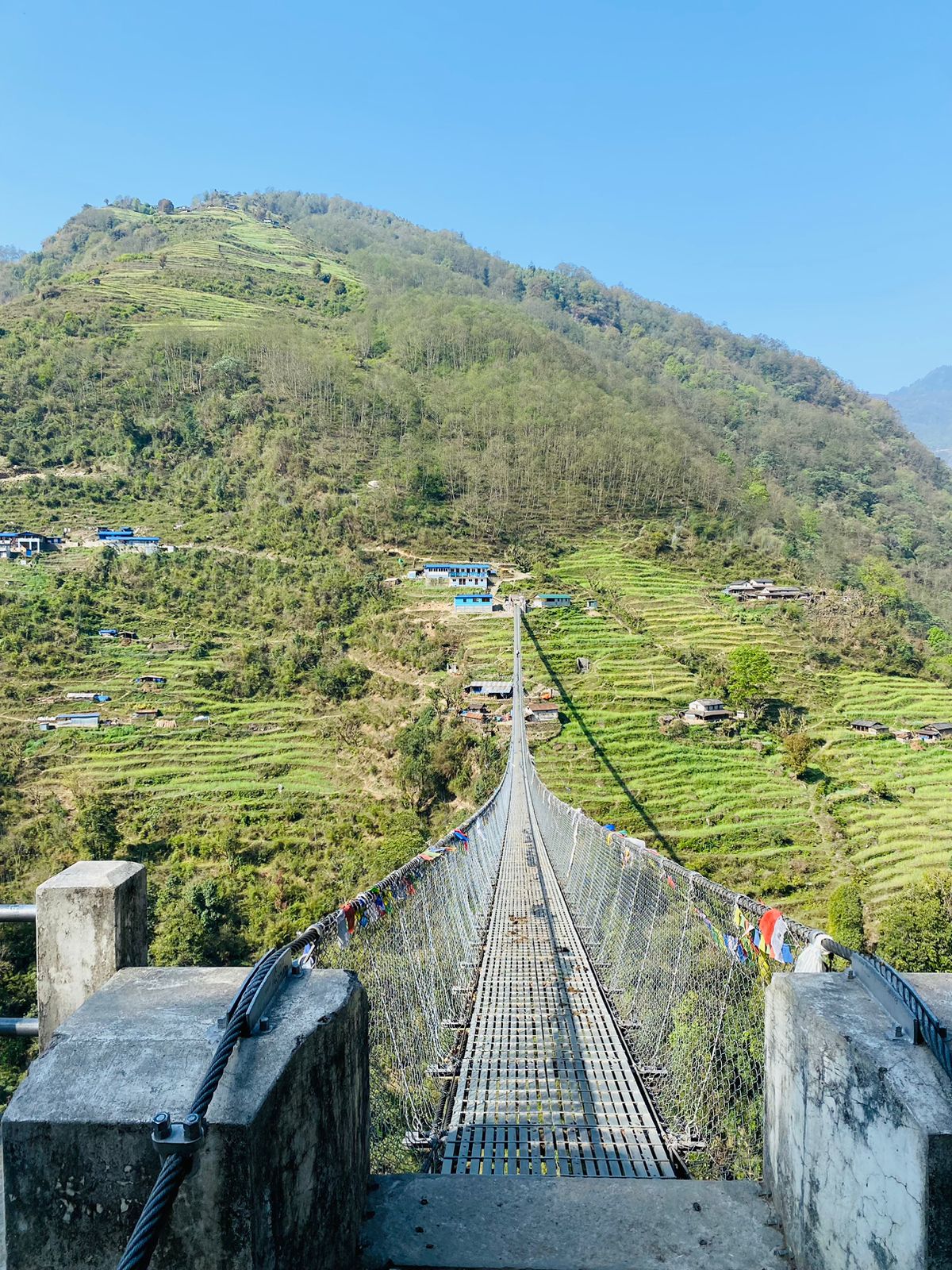
Annapurna Base Camp Trek is one of the most popular trekking routes in Nepal and probably holds a similar ranking in the worldwide countdown. It brings visitors literally upfront and face-to-face with the gigantic 8-thousander, which is an incredible feat for moderate trekkers. Distinctive views of Machhapuchhre, Annapurna South, Hiunchuli, Gangapurna, and Gandharvachuli greet the weary travelers to reinstate their lost energy and replenish with inspirational moments and vistas.
This marvelous trek in Nepal will lead you through the traditional picturesque hamlets including Ghandruk, Chhomrong, Bamboo, Deurali, Birethanti, Komrong, Jhinu Danda, Sinuwa, Himalaya Hotel, and Dovan. Travelers get a chance to peek into the Nepali culture as they ramble on varied terrains of terraced fields, undulating paths, forest tracks, and certain rocky trails. In fact, trekking in the Annapurna region is a melting pot to the adventurous souls, where you get to hear a variety of dialects and languages, get to exchange your notes with other trekkers, share ideas and experiences. The 2500 stone steps with teahouses on either side between Chhomrong and Bamboo is a fantastic experience for novice trekkers. However, the Annapurna trekking destinations are easily accessible with different trailheads starting just an hour or so from the lake city of Pokhara.
Finally, The best time do trekking in Nepal is during autumn and spring seasons. At that time the weather is perfect and the skies are blue and clearer and the glimpses to behold are simply awe-inspiring. If you are hiking during winters, make sure to have the latest information on trail conditions as there is a risk of avalanche between Himalayan Hotel and Machhapuchhre Base Camp. Furthermore, join Royal Holidays Adventure and plan your adventurous Annapurna Base Camp Trek in the Nepal Himalayas to get acquainted with the Nepalese landscapes, culture and age-old traditions.

The trek offers a variety of landscapes, including terraced fields, undulating paths, and rocky trails. This keeps the scenery interesting throughout the trek
You’ll pass through charming villages with traditional houses and friendly locals. Immerse yourself in the local culture and experience their way of life.
The Annapurna region boasts a variety of plant and animal life. Keep an eye out for rhododendrons, orchids, and birds like pheasants and thrushes.
Hike via Machhapuchhre Base Camp for even more spectacular views of this “fishtail” mountain
Soak in natural hot springs along the way and soothe your muscles after a day of trekking.
Join Our Small Group Departures
View Available Dates


